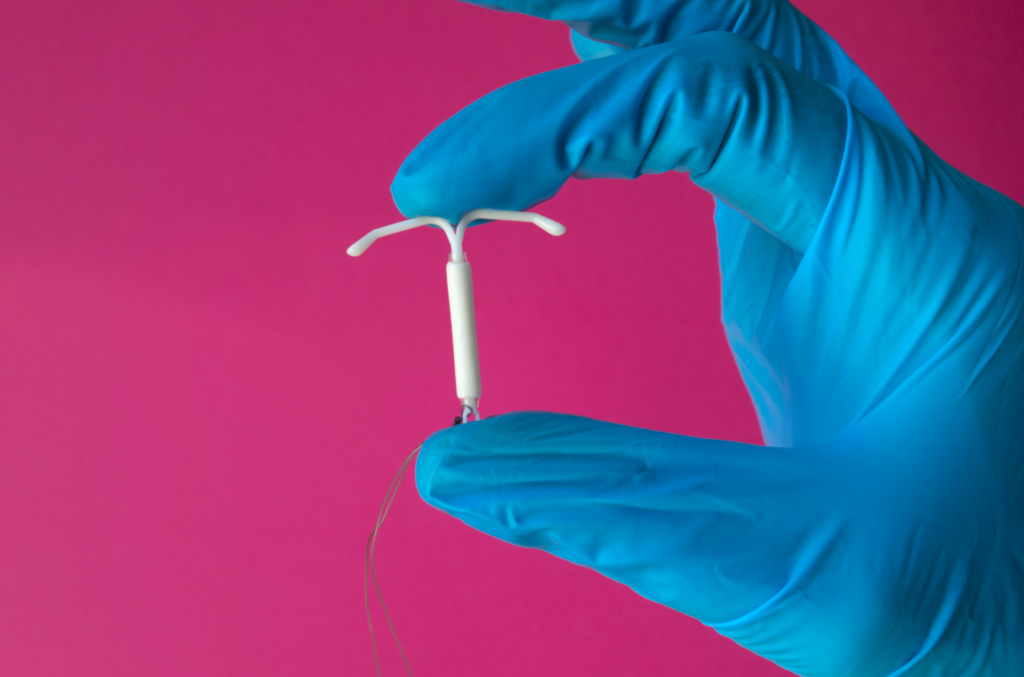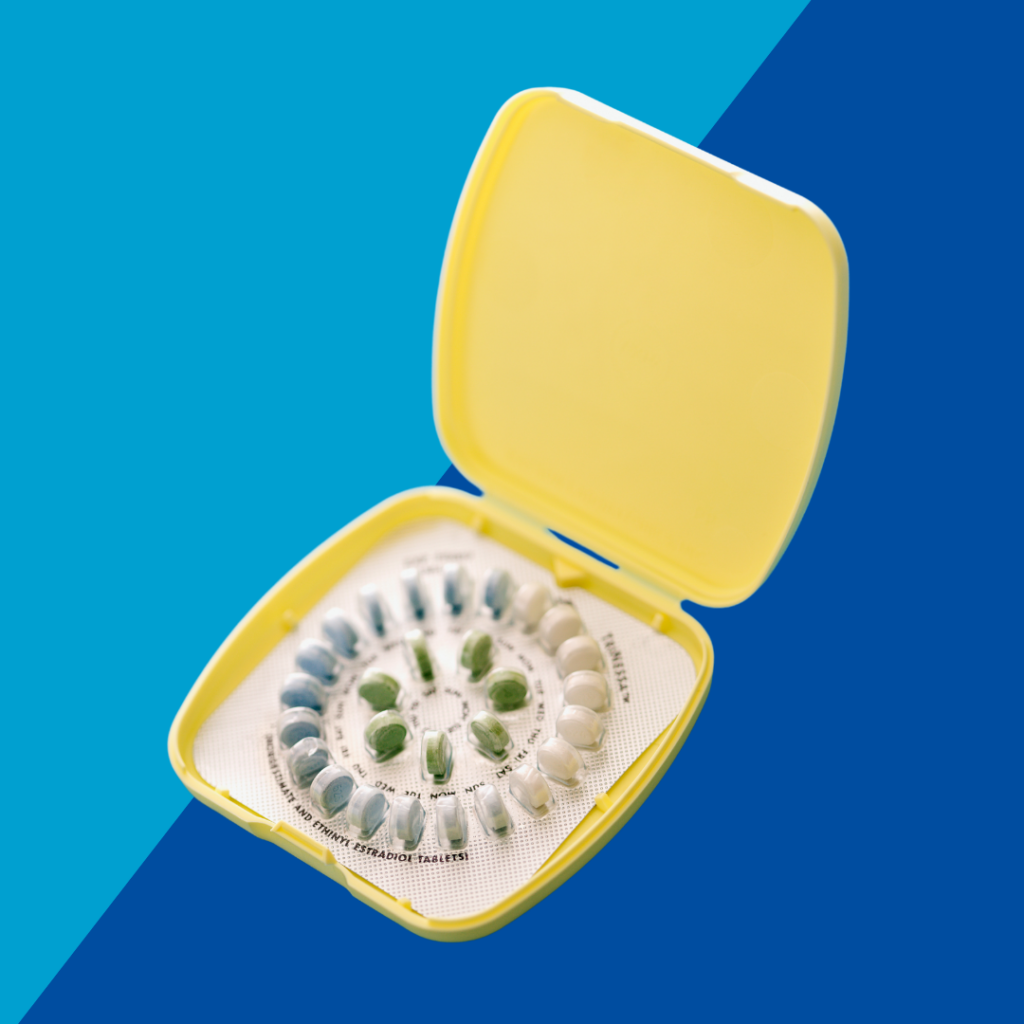Birth Control Series: The IUD

Before I begin, I have a question for you. What do the following things all have in common? Tom Cruise, typewriter, and television. Well, in no particular order, they all have made history. Top Gun, anyone? Then there’s also the obvious: they all start with “T.”
Now, there’s another history making “T” that we can add to this list—intrauterine device also known as the IUD. I know, I know…. you’re probably thinking “IUD does not start with a T!” You’re right, it doesn’t! However, there is a characteristic about this FDA-approved birth control method that may make it an honorable mention on this list. To find out what that characteristic is; and to learn more about the IUD, including how to get one at low or no cost from a trusted provider, keep on reading!
What is the IUD?
The IUD is a small piece of flexible plastic that is placed inside the uterus to prevent pregnancy. It is considered a “LARC” or in other words a long-acting reversible contraceptive because it can prevent pregnancy for several years once it is inserted into the uterus. It is also considered reversible because it can be removed easily, and baseline fertility returns quickly.
As I mentioned previously, the IUD birth control method can be added to the history-making T’s, and that’s because it’s shaped like one! This flexible piece of plastic that comes in different types is one of the most effective FDA-approved birth control methods around. Fun fact: they can also help with heavy or painful periods.
Types of IUDs and How They Work
So, what are these different types, you might ask? There are hormonal IUDs and copper (i.e., non-hormonal) IUDs. They both have that characteristic T-shape and are less than 1.5 inches long!
Hormonal IUDs release a small amount of hormones into the body of an individual with a uterus. This hormone is called progestin which is a synthetic version of the naturally made hormone progesterone. Hormonal IUDs prevent pregnancy by keeping sperm cells away from the eggs, and it does this in two ways:
- Hormonal IUDs increase the production of thick mucus in the cervix (i.e., the lower portion or neck of the uterus connecting the vagina to the main body of the uterus). This mucus blocks sperm so it cannot reach an egg.
- The lining of the uterus thins out with progestin, therefore, even if an egg and sperm came together, there is no place for them to attach.
Non-hormonal IUDs use copper instead of hormones to prevent pregnancy. Sperm and copper don’t exactly get along. In fact, sperm cells don’t like copper at all; the copper changes the way sperm cells move so they can’t swim to an egg, while increasing cervical mucus to make it more difficult for them to move.
IUD Insertion and Removal
To insert the IUD, the healthcare provider will place a speculum—an instrument used to separate the walls of the vagina to visual the cervix—into the vagina. Then the healthcare provider will use a special inserter to put the IUD in through the opening of the cervix and into the uterus. This whole process typically takes less than 5 minutes.
IUD insertions can range from a bad period cramp to what feels like bad labor pains. Many people feel moderate to intense cramping that lasts about a couple of minutes when getting their IUD inserted. Be sure to talk to your healthcare provider about pain management before your insertion. There is also the small possibility of feeling dizzy during or right after the IUD is inserted and there is a small chance of fainting. On rare occasion, it may be helpful to have someone else at the appointment who could drive you home, but this is definitely not necessary. You may have cramping or spotting after the IUD insertion, but this typically goes away within a few days. If you get a hormonal IUD, it’s very normal to have noncyclic bleeding and spotting for up to 3-6 months and after 6 months, many may have light spotting a few times a year.
For those who get a copper IUD, your period cycle should be the same as before, though some people may experience heavier bleeding and cramps. Also, the strings typically begin to soften within the first week and may take up to a few months to fully soften. Your sexual partner should not be able to feel the IUD strings. If they do, seek care from your healthcare provider who can trim the strings a little bit.
For the IUD removal, a healthcare provider will gently pull on the string, and the IUD’s arms fold up and it slips out. You may experience brief cramping upon removal. On occasion, it is also possible that the IUD will not come out very easily which may require special instruments or even surgery to remove it (although this is very rare).
Cost of IUDs
If you live in Illinois and have health insurance through an employer, a private healthcare plan, or through Medicaid, you should be able to get your IUD completely covered. If you don’t have insurance or if your insurance doesn’t cover birth control, there are still ways to get your IUD at low or no cost. If you are an Illinois resident, you may be eligible for the HFS Family Planning Program which covers all FDA-approved birth control methods, including IUDs. Take our quiz to see if you might be eligible!
ICAN! partners with community health centers across Illinois that are committed to providing you with the birth control method of your choice regardless of your ability to pay. Click here to find a health center near you!
Ultimately, its’s ok if you’re not a fan of Tom Cruise, or television even. You don’t need to be a big movie-goer to appreciate the value of a properly-placed “T.” In fact, if you’re still wondering if the IUD is a birth control method for you, please take ICAN!’s Birth Control Quiz or simply check out ICAN!’s Birth Control Options for more information!




